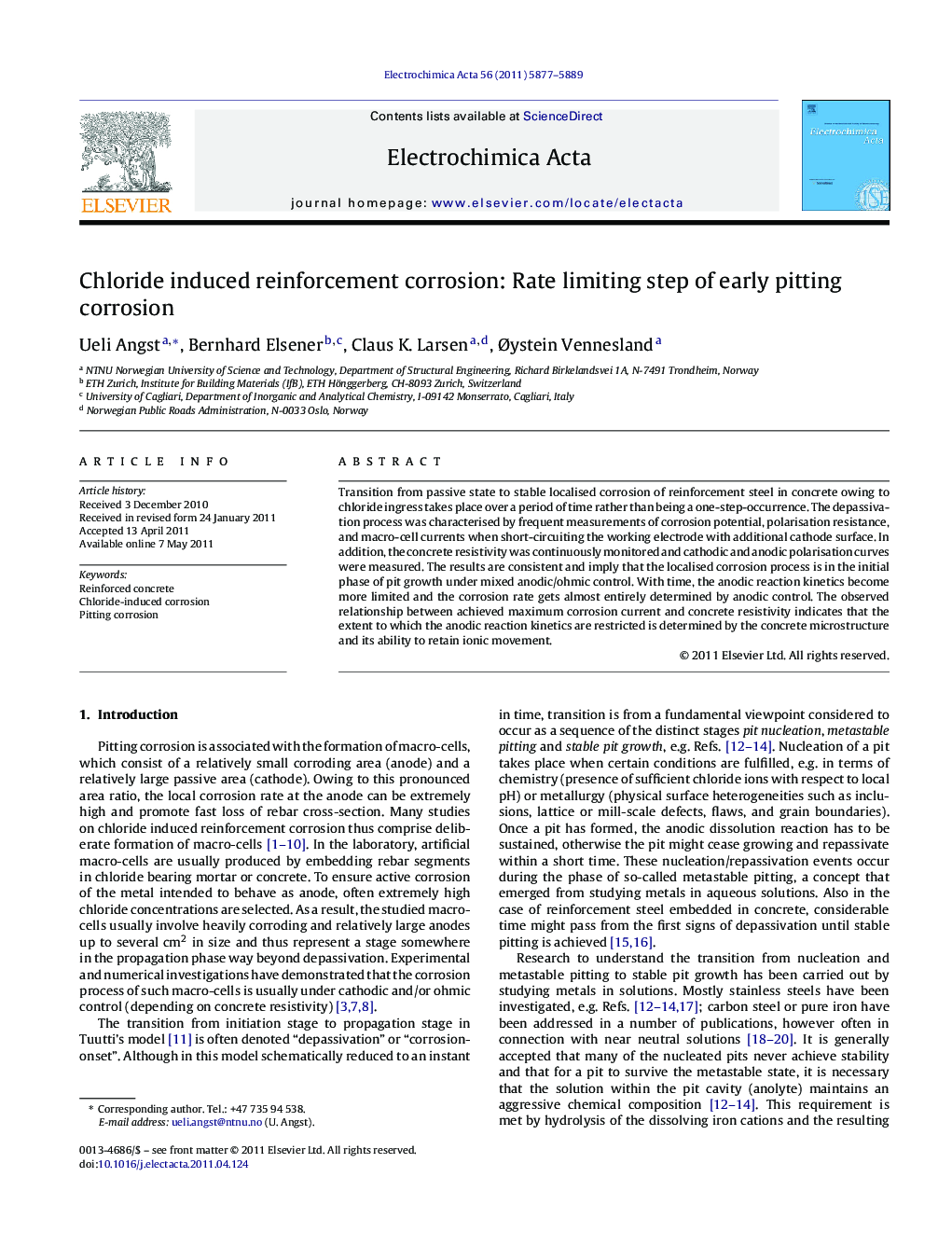| Article ID | Journal | Published Year | Pages | File Type |
|---|---|---|---|---|
| 189578 | Electrochimica Acta | 2011 | 13 Pages |
Transition from passive state to stable localised corrosion of reinforcement steel in concrete owing to chloride ingress takes place over a period of time rather than being a one-step-occurrence. The depassivation process was characterised by frequent measurements of corrosion potential, polarisation resistance, and macro-cell currents when short-circuiting the working electrode with additional cathode surface. In addition, the concrete resistivity was continuously monitored and cathodic and anodic polarisation curves were measured. The results are consistent and imply that the localised corrosion process is in the initial phase of pit growth under mixed anodic/ohmic control. With time, the anodic reaction kinetics become more limited and the corrosion rate gets almost entirely determined by anodic control. The observed relationship between achieved maximum corrosion current and concrete resistivity indicates that the extent to which the anodic reaction kinetics are restricted is determined by the concrete microstructure and its ability to retain ionic movement.
► The type of corrosion control of early pitting in reinforced concrete is studied. ► Various measurements indicate that the process is dominated by anodic control. ► Corrosion rate appears to correlate with concrete resistivity. ► A conceptual model for the role of concrete resistivity is discussed.
